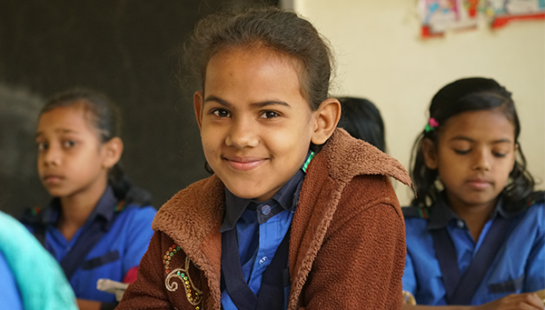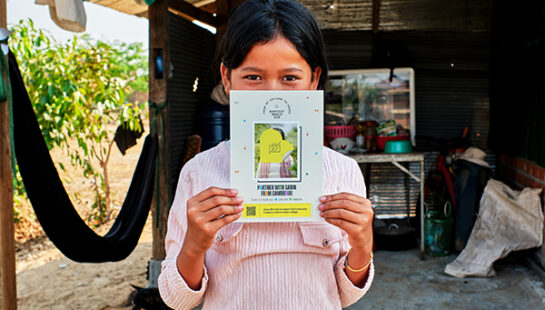At the height of COVID pandemic, 12-year-old Taslima met our local Christian Partners in Bangladesh. An Australian family sponsored Taslima through our Child Sponsorship program, which meant she was able to go to school and her family could access their basic needs.
Bangladesh is one of the world’s most densely populated countries, with more than 169 million people—more than six times the population of Australia—living in an area roughly two-thirds the size of Victoria.
Record inflation, COVID and cyclones left families like Taslima’s surviving by collecting firewood to sell at the local market. They couldn’t afford even the most basic household items.
In my role as the South Asia Regional Lead for Baptist World Aid, I was delighted that Taslima and her mother, Grace, were able to connect with one of our Partners in Bangladesh.
Parent Are Concerned About Child Safety Online
Australians share some common ground with Taslima and Grace: the challenge of rising living costs, grappling with the ongoing impact of COVID, and a desire for our kids to be happy and safe. Something else we share is a concern around how our images might be used online.
‘I am concerned about my photo being taken for Baptist World Aid’s Child Sponsorship program, and how it could be used online,’ Taslima explained to me in a recent consultation session. ’We are very concerned about how you will respect Taslima’s identity and privacy,’ Grace added.
We heard this message many times over from the children, youth and parents in our programs. Like us, they’re aware of the dangers the digital world poses for children and youth. And like us, they want safety measures in place to protect themselves (or for parents, to protect their children).
Who Decides What’s Best For Children?
Too often, the aid and development industry has been overly donor-centred, as those with money pull the strings on how funding is used. In our efforts to attract potential supporters, we’ve often favoured tactics that will have the most emotional impact, rather than what upholds a child’s agency and dignity.
Having worked on aid programs in some of the world’s most vulnerable communities for 17 years, I’ve seen how rare it is for communities to be consulted on how their experiences are used to attract donors—rarer still for youth, children and families. This is at odds with the participant-led approach to community development that is now considered best practice around the world.
For 50 years, Baptist World Aid has been elevating the rights of children and youth through programs made possible by Child Sponsorship. Children in our programs are regularly asked to design and lead the programs they take part in. They’re familiar with being consulted, so when we recently sought their opinions on how their images are used to promote Child Sponsorship in Australia, I wasn’t surprised by their maturity in our discussions. Their perspectives on these matters were impressive, highlighting their awareness and active engagement in their own safety and wellbeing.
What’s Is Baptist World Aid Doing To Protect Children Online?
Now that the children have spoken, we have changed the way we promote Sponsorship in Australia to ensure we’re at the forefront of protecting the rights of young people and lowering the risk of online exploitation. Specifically, this means Baptist World Aid does not display the faces of children awaiting Sponsorship online but covers them with a ‘sticker’ to protect their identities until a Sponsor signs up.
This move has been well received by children and their families participating in our programs. Their responses during our consultation sessions have been enthusiastic and supportive. ‘We love the idea of covering the photos online and on cards at churches and events,’ Taslima said. ‘Surely it would enrich the dignity of children.’
It’s vital we prioritise listening to the voices of all children, especially those who are most vulnerable. While displaying the faces of children online makes ‘selling’ Sponsorship to Australians easier, we’re committed to including the voices of each of the children we’re trying to support as much as we can.
When you become a Child Sponsor, you can be proud to support children and young people who are being listened to, consulted and equipped with the skills they need to champion the rights of other children in their communities. After becoming a Sponsor, you’ll receive of photo of the child you’re supporting and you can build that valuable relationship from there–writing letters and receiving updates on their progress.
Click here to learn more.



 Meredith Benson,
Meredith Benson,
